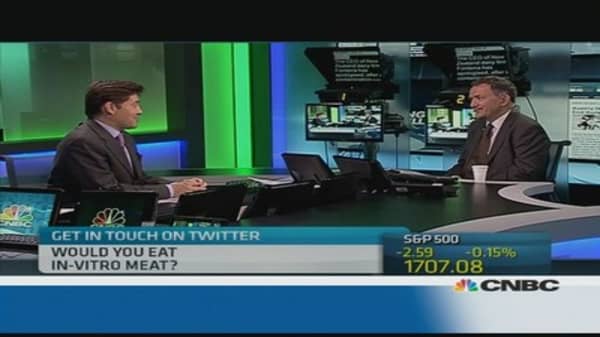At the intersection of cattle and climate change, two rival visions for the future have emerged: One with more cows, one with fewer.
The test-tube burger that debuted last week inspired visions of a future in which meat is readily available without livestock's nasty byproducts—manure and methane. Mark Post, the Dutch physiologist behind the petri patty, said reduced methane emissions—and thus less cooking of the climate—was one desirable aspect of his pursuit.
(Read More: Google's Brin bankrolls lab-grown burger)
But earlier this year, one Zimbabwean scientist-farmer made a big stir—his TED Talk YouTube video just passed the half-million mark—with quite the opposite vision: Allan Savory suggests a world in which more herds of animals graze, fertilize and rejuvenate land turned barren by desertification. Such revitalized land can absorb a lot of carbon dioxide, the primary greenhouse gas.
So can cows nurture and sustain the land in symbiotic harmony while also providing an important source of protein, or have they become a modern plague whose waste pollutes and whose flatulence heats up the globe?
Both, It turns out. "It's a matter of how they're managed," said Ray Weil, a leading agriculture research scientist with the University of Maryland and Columbia University's Earth Institute. "But the way we manage cattle today makes very little ecological sense," he said, citing corn diets and concrete feedlots.






